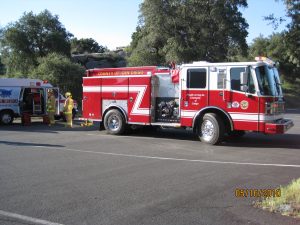Preparing for Natural Disasters: Emergency Medicine’s Role


In the face of rising global challenges, including climate change and natural disasters, the readiness of emergency medicine has never been more critical. Natural disasters, ranging from hurricanes and earthquakes to floods and wildfires, pose significant threats to communities worldwide. These events can lead to catastrophic loss of life, extensive property damage, and profound long-term health consequences. Amidst this chaos, the role of emergency medicine is pivotal, acting as a beacon of hope and a critical responder to the immediate needs of affected populations. This article delves into the vital role of emergency medicine in preparing for and responding to natural disasters, highlighting the importance of preparedness, swift action, and comprehensive healthcare strategies.
The Frontline of Response
Emergency medicine professionals are often the first responders when disaster strikes. Their expertise in triage, acute care, and life-saving interventions becomes the frontline defense against the initial impact of natural disasters. The rapid assessment and prioritization of injuries ensure that the most critical patients receive immediate attention, a process that can significantly reduce mortality rates. Emergency departments transform into hubs of activity, coordinating not only with in-hospital departments but also with external agencies to manage the influx of patients effectively.
Preparedness and Training
Preparation is a cornerstone of emergency medicine’s role in disaster response. Hospitals and emergency services conduct regular drills and simulation exercises to prepare for various scenarios, from mass casualty incidents to the outbreak of diseases following a disaster. These training exercises are designed to test and improve the efficiency of emergency protocols, ensuring that medical personnel can respond swiftly and effectively. Additionally, education on disaster medicine has become an integral part of the curriculum for medical professionals, equipping them with the necessary skills and knowledge to handle complex situations. The rapid assessment and prioritization of injuries ensure that the most critical patients receive immediate attention, a process that can significantly reduce mortality rates.
Community Engagement and Education
Emergency medicine extends beyond the hospital walls, engaging with communities to enhance disaster preparedness at the grassroots level. Public health campaigns and workshops aim to educate the public on basic first aid, emergency response actions, and the importance of disaster preparedness kits. By empowering individuals and communities with knowledge and resources, emergency medicine professionals help build a more resilient society capable of facing natural disasters with greater confidence and self-sufficiency. Hospitals and emergency services conduct regular drills and simulation exercises to prepare for various scenarios, from mass casualty incidents to the outbreak of diseases following a disaster.
Technological Advancements and Innovations
The integration of technology into emergency medicine has revolutionized disaster response strategies. Telemedicine, for instance, allows for remote consultations, providing critical medical guidance in areas that may be cut off from direct medical assistance. Mobile health apps and social media platforms offer real-time updates and health advisories, facilitating faster dissemination of information. Moreover, advancements in medical equipment, from portable ultrasound machines to mobile laboratories, enable more effective on-site patient care, even in challenging conditions.
Collaboration and Coordination
A coordinated effort among various stakeholders is essential for an effective response to natural disasters. Emergency medicine professionals work closely with local, national, and international agencies, including disaster response teams, public health organizations, and non-governmental organizations (NGOs), to ensure a unified and efficient approach. This collaboration extends to post-disaster recovery and rehabilitation efforts, focusing on restoring health services and addressing the long-term health impacts on the affected population. Despite significant advancements, emergency medicine faces numerous challenges in the context of natural disasters.
Challenges and Future Directions
Despite significant advancements, emergency medicine faces numerous challenges in the context of natural disasters. Limited resources, infrastructure damage, and logistical constraints can hamper response efforts, underscoring the need for continuous improvement in disaster preparedness and response strategies. Future directions include enhancing global health security networks, investing in disaster-resilient infrastructure, and fostering international cooperation to share knowledge, resources, and best practices.
The role of emergency medicine in preparing for and responding to natural disasters is indispensable. Through preparedness, swift action, and a comprehensive approach to healthcare, emergency medicine professionals save lives and mitigate the impact of disasters on communities. As the frequency and severity of natural disasters continue to rise, strengthening the capacity of emergency medicine, alongside a collaborative and technology-driven approach, will be paramount in safeguarding the health and well-being of populations worldwide. In the face of adversity, the resilience and dedication of emergency medicine stand as a testament to the collective human spirit, ready to confront the challenges that lie ahead. Despite significant advancements, emergency medicine faces numerous challenges in the context of natural disasters.
